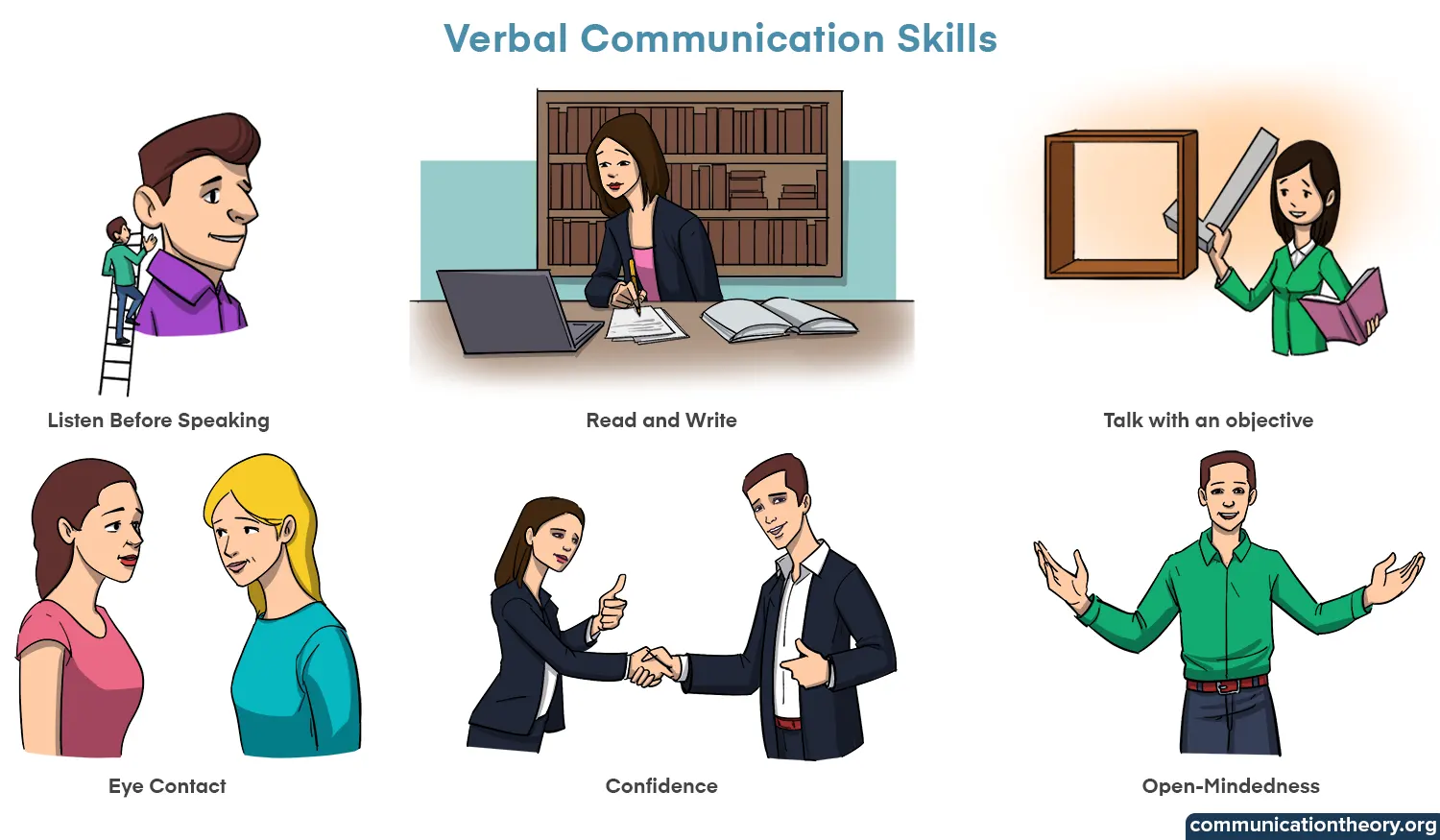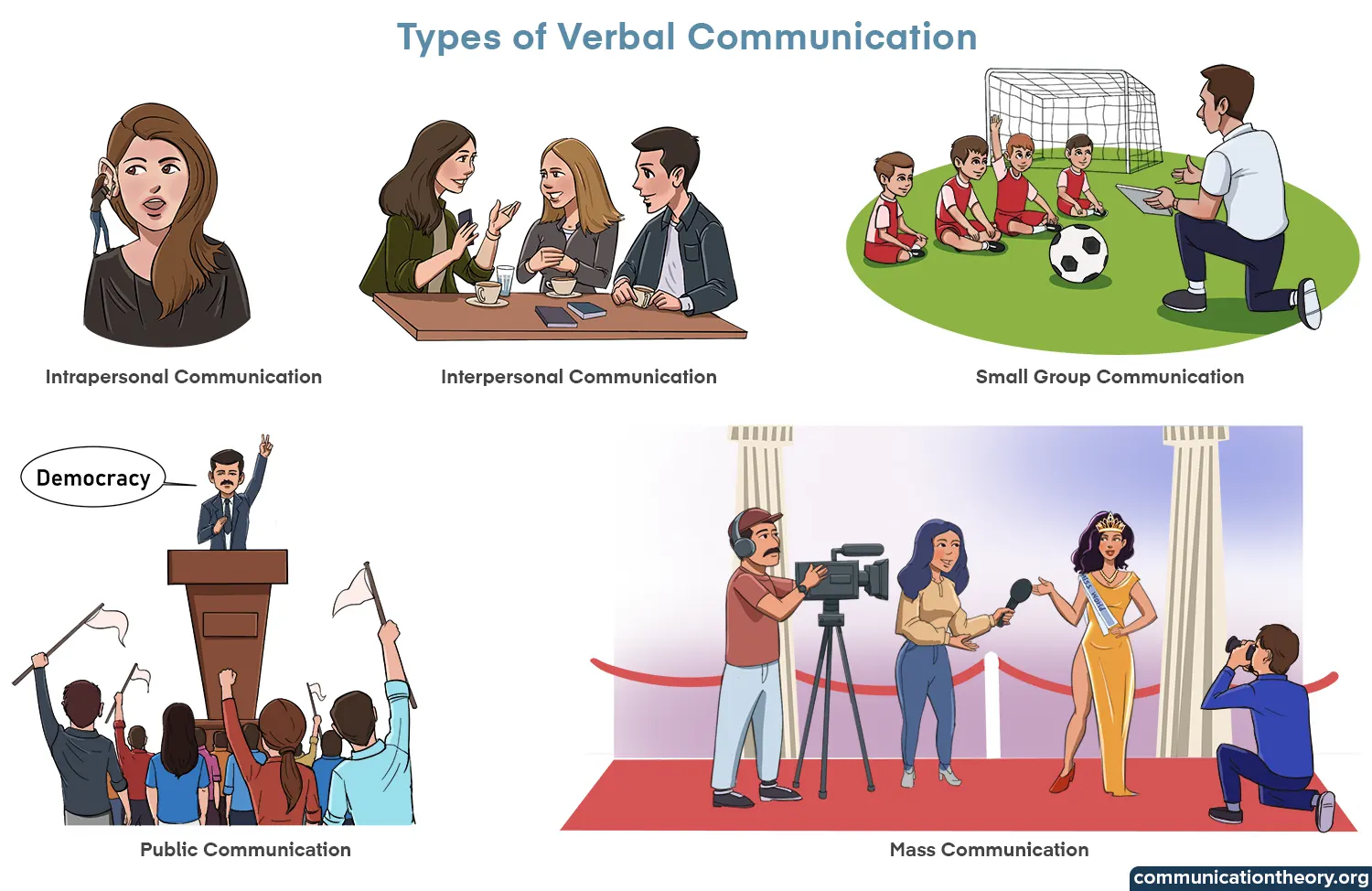What is Communication?
Communication is the transference of messages between two or more people. Humans are social beings and hence we constantly communicate and share ideas and information with other fellow humans. This process involves six essential elements to make effective communication. They are the sender, the message, medium of transfer, encoding, and the receiver, medium of transfer and decoding. Although this may seem like an easy process, it takes meticulous effort on the part of the sender and receiver so that the intended message is sent or received successfully.
What are the types of communication?
Humans do not just utilize one way of communicating. They adopt various methods through which communication occurs. There are three broad types of communication.
- Verbal communication: In this type of communication, words are employed to transmit ideas or information. This can be done in the form of verbal interactions or through written or text messages such as letters, e-mails, telegrams, SMS and other contemporary modes of transmission.
- Non-verbal communication: This type of communication takes place through a medium other than words. Non-verbal communication involves body language and gestures such as eye contact, nodding, hand gestures, posture etc. to transfer any message.
- Visual communication: This is yet another type of communication that adopts visual graphics to convey the desired message. For example, pictures, presentations, infographics etc. are used to communicate information.
Verbal communication and its types
As mentioned above, verbal communication is the method of sending and receiving information using words as the mode of transmission. This can be done by either engaging in verbal conversations or by sending written messages. For example, Gerald wanted to convey to his boss that he would be taking a day off from work as he has his doctor’s appointment. He chose to send the message via e-mail as that would be considered more professional rather than making a call regarding the same.
The method of verbal communication can also be classified into different types and they are:
- Intrapersonal communication
- Interpersonal communication
- Small group communication
- Public communication
- Mass communication
Intrapersonal Communication
Intrapersonal communication is nothing but the internal dialogue people usually engage in. This type of communication takes place when a person talks to themselves. Here, communication takes place within the brain. People usually interact with themselves on many occasions such as when processing vague information, reaching clarity about something, tackling overwhelming emotions, daydreaming etc.
For example, Katie always has the habit of discussing with herself before taking any important decisions. She feels that talking to herself helps her tackle any confusion efficiently.
Interpersonal Communication
This type of communication is also called “Dyadic communication” and it takes place between two or more individuals. This method involves various aspects of communication such as listening, speaking and responding through words and various acknowledging non-lexical fillers such as “uh-huh”, “hmm” and some head and hand gestures etc.
Small group Communication
This is a type of interaction that takes place in a small group between three or more people. This kind of group would involve interactions about a specific topic or commonly recognized goals. Some examples of small group communication are board meetings, team discussions etc. All the members of the group unanimously discuss and conclude.
Public Communication
In this communication, one speaker conveys information to a large group of people. This takes place in a setting where a large group of people assemble to receive the information from the speaker. Some examples of this type of communication involve election campaigns, public speeches etc. where information is passed on from one common source to hundreds of individuals.
Mass Communication
Mass communication takes place when a small group of people pass down information to a large number of varied populations using an exclusive medium of communication. This type of communication adopts a special kind of medium that would facilitate the information to reach a wide majority of people. Some examples of mass communication are newspapers, radio, television, posters etc. Recently social media has taken the world by storm and has been very efficient in communicating ideas and information all across the globe within seconds.
How to deliver good public speeches
Some hooking strategies can be applied when presenting speeches to deliver striking presentations and speeches.
- The initial part of the speech creates an immediate impression on the audience. It is essential to start the speech in such a way that the audience is eager to know what the next thing we are going to say. The speech can be started with a question, a dialogue, a joke or a fact.
- Have a relaxed and straight body posture as that reveals confidence.
- It is integral to use hand gestures when talking as that makes the speech more relatable.
- Keep the speech short and crisp as long draggy speeches make people lose interest and attention.
- Maintaining eye contact is a must as that helps connect with the audience.
- Vocal intonations and using the relevant voice modulations can make the speech impactful.
- All the above-mentioned suggestions would prove fruitless without practice. No matter how confident one might be; a speech without practice is like walking on an eggshell and expecting it not to break.
How to initiate a conversation?
In many situations, we are put in a place where we have to start a conversation with someone; be it a colleague, a superior or someone we meet at a party. Here are some simple yet effective ways by which we can start a conversation:
- The first step to starting any kind of conversation is by greeting the other person. Depending on the nature of the situation, it can be alternated between “hello”, “hey”, “what’s up with you?”
- Some of the successful conversation starters are discussing or asking questions about the weather, sports, recent news updates, the event where they meet etc.
- Giving a compliment is another great way to start a conversation. This instantly gives room for the details about the thing being complimented and that would give a good flow to the conversation.
- Try to look for a common ground. Enquire about the other person and something might instantly click and that would help take the conversation forward.
- Ask for an opinion. “Hey, how do you like the event?”. That would make things rather comfortable than awkward.
What are the advantages and dis-advantages of verbal communication?
Advantages:
- It is the most convenient mode of communicating information.
- It helps in conveying messages with clarity and precision.
- It is the most confidential medium of interaction.
- Verbal communication helps in easier comprehension.
- Instant feedback can be received.
Disadvantages:
- Verbal communication holds no proof of the conversation held unless it is recorded.
- Emotions during the conversation can twist the intended meaning of the message.
- Verbal communication can get lengthy and hence distort the purpose of the conversation.
- The messages sent across can be misinterpreted.
- In verbal communication, there is no going back. Everything is said and done and the person has to live with the consequences of the words spilt.

Strategies to enhance verbal communication
- Listen before speaking: One major mistake that we all make is we listen to respond. The goal should instead be to listen to understand. For effective communication to take place it is integral to comprehend what the sender has to say so that the intended information is received successfully. Active listening involves not just superficially taking in what has been sent but also viewing the information from their shoes and considering the contextual nuances.
- Talk with an objective: Effective communication takes place when there is a goal behind it. The main objective of a conversation is to convey and receive information. Talking without an objective may make the conversation pointless and ineffective.
- Reading: Reading is a valuable habit to be inculcated as it requires concentration and open-mindedness to accept the narrative of the author and the message they try to convey. It helps in understanding information better and also hones the ability to express messages with precision.
- Look out for non-verbal cues: Various studies show that non-verbal communication makes up to 50% of the overall communication that takes place. People are more likely to express their true intentions through body language and gestures rather than express them verbally. It is pivotal to look out for the subtle non-verbal cues that people send out as they converse so that the relevant responses can be sent back to them.
- Use of simple language: The ultimate goal of any conversation is to share and receive ideas and messages. Therefore instead of using words that may complicate the effective comprehension of the message, simple words could be employed as this will ensure easy understanding. It is also very essential to be clear and precise when conveying any message.
- Acknowledgement: People have the natural tendency to expect undivided attention from the other person to know that they’re being heard. Therefore using various acknowledging gestures such as nodding, saying statements like “I hear you”; “go on” etc. can enhance the quality of the conversation.
- Assertiveness: It is important to address a conversation with assertiveness rather than being passive or aggressive, as that would encourage healthy communication between the parties and make sure that the needs of all the individuals get fulfilled equitably.

its good website to understand the verbal communication